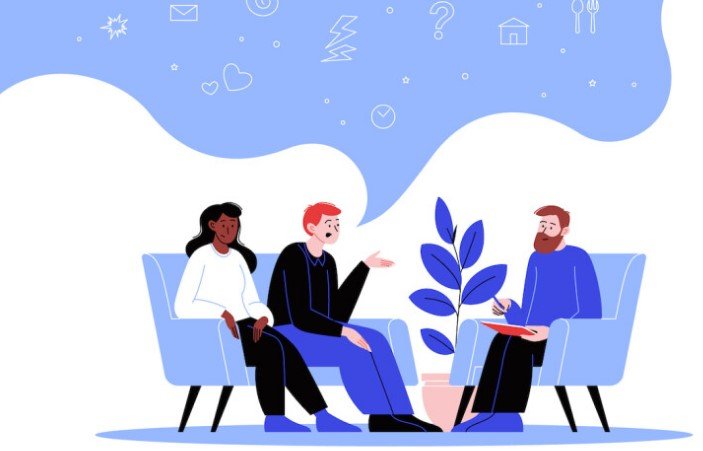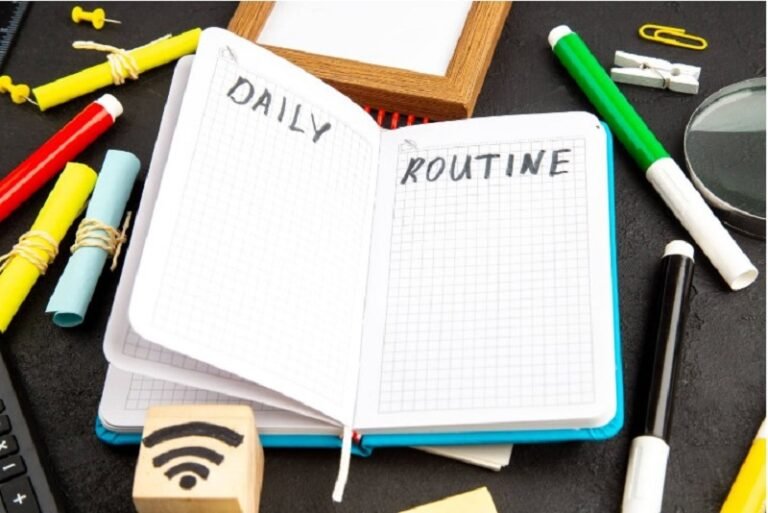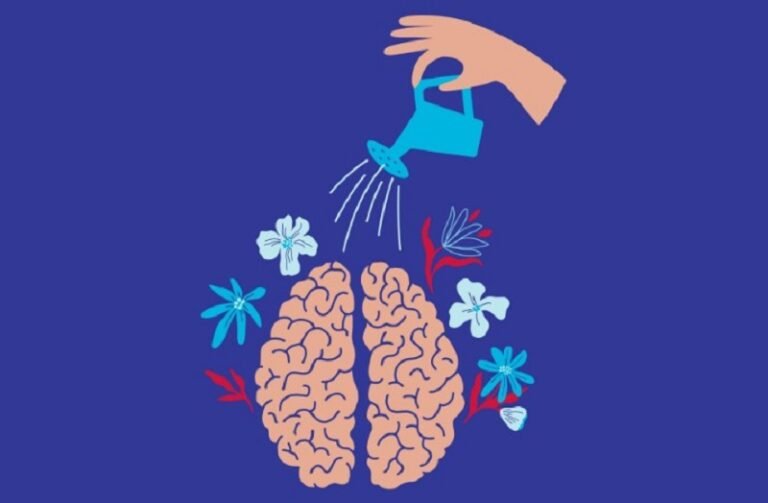Master Your Connection: Exploring Communication Styles in Relationships

Understanding Communication Styles
Impact on Relationships
Understanding how we communicate is like discovering relationship magic! It’s super important for couples to get what makes each other tick. When you chat well, it’s all about saying what you mean, getting your partner’s vibe, and keeping those nasty fights at bay. It’s not just talking, it’s about making your partner feel like a superstar by actually listening and caring how they feel. When you’re on the same wavelength, it feels like you’re on cloud nine, with fewer drama days and more genuine connections. Stay tuned for more gems on effective communication in relationships, and level up your love game.
Assertive vs. Passive Communication
Let’s break down the chat game into two plays: assertive and passive. Each one dances differently in your love life.
First up, assertive chatters. They’re all about speaking up without shouting down. Clear and confident, they get their point across and still make room for you to shine too. It’s a win-win style, serving equality on a silver platter. But let’s keep it real, sometimes assertiveness walks a tightrope looking down at aggression land. For all you daredevils out there, mind that line for a chat that’s both fearless and kind-hearted. (SNHU).
| Communication Style | Characteristics | Impact on Relationships |
|---|---|---|
| Assertive | Clear, direct, respectful | Builds respect, sparks love fireworks |
| Passive | Peace at any cost, keeps it under wraps | Brews confusion, leaves needs hanging |
Then, there are the peacekeepers – the passive peeps. They’d rather bite their tongue than stir the pot. While it’s chill, it risks leaving feelings in the dust, stuck in an emotional jam. This can unbalance the scale, leaving one person’s needs trailing behind like a forgotten suitcase. If you’re feeling stuck on the passive rollercoaster, check our article for help with improving relationship communication skills and navigate to smoother seas.
Getting a handle on these styles opens up a world of better connections. Whether it’s letting assertiveness lead the way with a sprinkle of empathy or gently recognizing when passivity stops the flow, this knowledge is the first step in rocking communication. To live the trust-building dream with your special someone, take a look at our guide to building trust in relationships and learn how to seal the deal in your romantic realm.
Importance of Effective Communication
Talking and listening well are the secret sauces to keeping a relationship happy and healthy. Good chats are key to keeping partners close and sorting out disagreements.
Emotional Intimacy
Feeling close emotionally is what keeps relationships rock solid. How you gab with your partner can make or break that closeness. If you get each other’s way of expressing things, you’ll have fewer fights and more smiles (CAWB).
How folks talk can either bring them closer or drive a wedge between them. When partners don’t jive in their talking styles, like being too bossy or too laid-back, it’s a recipe for chaos and sullenness, which drag emotional vibes downhill (CAWB). But, if you’re all ears, show you get it, and give feedback right away, you’ll see eye-to-eye a lot more. Studies have shown that when partners understand each other, it makes the whole relationship feel like one big supportive hug (CAWB).
For handy tips on chatting better and shoring up trust with your beloved, peek at our guide on building trust in relationships.
Conflict Resolution
Every couple hits bumps now and then, but how you talk it out can change how those hiccups get smoothed over. Explaining where you’re coming from helps keep the bond strong (Better Health Victoria).
When chat styles clash, squabbles can tenfold. Think of passive-aggressive antics: showing you’re peeved not with words but by pulling a vanishing act, moody moping, dragging your feet, or throwing a wrench in group plans. This leaves folks scratching their heads and feeling off-kilter (Psychology Today).
Here’s a cheat sheet on how different talking styles shake out when you’re butting heads:
| Communication Style | What It’s Like | Conflict Vibe |
|---|---|---|
| Assertive | Straightforward, polite | Good, helps work things out |
| Passive | Dodges arguments, bottles up feelings | Bad, stuff stays unresolved |
| Aggressive | Pushy, rude | Bad, ramps up tensions |
| Passive-Aggressive | Roundabout, sneaky | Bad, leads to more drama |
For ways to handle spats like a pro, head over to our piece on conflict resolution in relationships.
To wrap it up, getting a handle on how you and your sweetie talk can do wonders for keeping you both cozy and sorting out dust-ups. For tips that really work, check out our page on improving relationship communication skills.
Types of Communication Styles
Figuring out how folks communicate in relationships is pretty key if you’re aiming for smooth interactions and a deeper connection. Let’s break down assertive communication and see how it stacks up against passive, aggressive, and passive-aggressive styles.
Assertive Communication
Being assertive is all about sharing your feelings and thoughts straight up, but also with a touch of class and respect. People who communicate this way are clear on what they want without stepping on any toes. It’s hands-down the best bet for keeping things running smoothly in relationships.
Some key things about assertive communication:
- Straightforward: No beating around the bush.
- Respectful: Doesn’t ignore others’ feelings and thoughts.
- Accountable: Owns up to feelings and actions.
Even though it’s got a lot going for it, some folks might see assertiveness as being pushy. This can throw a wrench in the works sometimes.
Passive, Aggressive, and Passive-Aggressive Styles
These styles are a far cry from assertiveness and can often stir up misunderstandings and conflicts.
Passive Communication
Passive communication is like going through life on mute. People keep their thoughts and feelings to themselves, often giving in to what others want and ignoring their own needs, which can lead to some bottled-up anger.
Key points about passive communication:
- Avoidant: Keeps quiet.
- Submissive: Others’ needs are front and center.
- Frustrated: Internalized feelings build up over time.
Aggressive Communication
Imagine a steamroller talking—this style is all about pushing through needs and desires with force. Aggressive communicators might resort to scare tactics or try to overpower, which can get pretty messy.
Key traits of aggressive communication:
- Overbearing: Tries to dominate.
- Forceful: Likes using strong words or actions.
- Argument-prone: Often ends up in disputes.
Passive-Aggressive Communication
This one’s a sneaky blend of both passive and aggressive traits. While seeming passive, the communicator might express dissatisfaction in roundabout ways, causing confusion and leaving issues hanging.
Notable aspects of passive-aggressive communication:
- Indirect: Beats around the bush to show displeasure.
- Subtle: Keeps behavior vague and hard to read.
- Unresolved: Problems tend to linger.
Here’s a little cheat sheet to tell these styles apart:
| Style | Directness | Respect | Typical Behavior |
|---|---|---|---|
| Assertive | High | High | Open, honest, clear |
| Passive | Low | High | Avoiding, yielding, suppressing |
| Aggressive | High | Low | Intimidating, forceful, dominating |
| Passive-Aggressive | Low | Low | Subtle, indirect, ambiguous |
Dr. Daria S. LaFave from Southern New Hampshire University highlights how knowing these styles helps improve communication in various situations.
Recognizing these communication styles can give couples a leg up in picking the best way to chat with one another. Want to spruce up your communication game? Check out our articles on effective communication in relationships and improving relationship communication skills.
Factors Influencing Communication
Lots of things can tweak the way folks chat in relationships. Gender and cultural differences are big players. Getting a grip on these can help pairs talk better.
Gender and Perceptions
Gender’s a big deal in how communication styles are seen. Guys speaking up often get a pat on the back, while ladies might catch some flak for seeming too pushy when they do the same (Psychology Today). This twist can mess with how folks pick up and get the message.
| Gender | Perceived Assertiveness |
|---|---|
| Men | Praised |
| Women | Seen as Aggressive |
Knowing how your style lands based on gender can be a game-changer in relationship communication. Studies highlight that being clued into these gender quirks leads to more understanding and better chats (Better Health Victoria).
Cultural Differences
Culture throws a huge curveball into how people talk. Everyone comes with their own baggage full of values, beliefs, and past stories. This can stir up confusion when different cultural do’s and don’ts clash, messing with how messages hit and how folks react (SNHU).
| Cultural Aspect | Potential Influence on Communication |
|---|---|
| Values | Dictates what’s chat-worthy |
| Beliefs | Shapes views and comebacks |
| Experiences | Affects how things are taken in and understood |
By acknowledging these differences, couples can get on the same page and sidestep miscommunication. For tips on handling cultural bumps, check out our guide on improving relationship communication skills.
If you’re curious about how culture flavors relationships and want some pointers on bridging the divide, swing by our section on navigating cultural disparities.
Conflict in Relationships
Conflicts pop up in relationships like unwelcome party crashers—annoying but sometimes inevitable. Figuring out why they happen and how they shake things up can help couples tackle them head-on without everything spiraling out of control.
Sources and Impact
You know how it goes: many things can push a couple into squabbles. The usual troublemakers include unmet expectations, issues with closeness, money worries, parenting disputes, jealousy, and pesky habits that drive a partner up the wall. Bickering over these things can ratchet up the stress levels, leaving both parties feeling the strain.
| Usual Conflict Culprits | Couples Experiencing (%) |
|---|---|
| Unmet Hopes | 45% |
| Intimacy Drama | 55% |
| Money Problems | 60% |
| Kid-Raising Clashes | 50% |
| Jealousy | 30% |
| Annoying Habits | 40% |
On top of that, fights have a knack for messing with how couples communicate. When the communication is all over the place, resolving tiffs can seem as hard as threading a needle in the dark. If folks feel ignored, it can build a wall of resentment that’s tougher to scale.
Managing and Resolving Conflicts
Working out conflicts means putting on your big-boy and big-girl pants and facing the issues with some healthy chat. Speaking your mind helps when the stuff’s seriously heavy, but it can backfire if you’re not feeling too sure of yourself.
| Style of Talking | How It Works | How Well It Works |
|---|---|---|
| Head-On Arguments | Tackle it directly | Good for big stuff, risky otherwise |
| Friendly Chatter | Keep it loving and understanding | Handy for little issues |
| Beating Around the Bush | Wrapping hints around issues | Doesn’t really push change |
| Open-and-Clear Talks | Honest, supportive chat | Leads to better outcomes |
Leaning towards direct and friendly chatting when dealing with togetherness troubles can do wonders. It means keeping open lines, showing some love, and working things out calmly without pointing fingers. For extra tips, check out our guide to conflict resolution in relationships.
Putting these tips into play can not only help patch up fights but also boost how couples chat with each other, leading to a bond that’s as solid as a rock. Need more advice? Slide over to our guides on effective communication in relationships and improving relationship communication skills.
Handling Culture Clashes in Love
Dealing with cultural differences in relationships isn’t a walk in the park, but it can bring great rewards. Couples who manage to harmonize their diverse backgrounds often discover a richer bond. Here’s some practical wisdom for embracing diversity and understanding each other more deeply.
Tips for Getting the Hang of It
Grasping those cultural quirks is key to chatting better with your partner. Different backgrounds, whether they’re wrapped up in ethnicity or nationality, can shape how people interact and what they expect (Medium). Here’s how you can get a better handle on it:
- Talk It Out: Start conversations about where you’re both coming from, your beliefs, and what practices you grew up with. A good chat can clear up lots of possible mess-ups.
- Give Mad Respect: Show some love for your partner’s customs and ways of doing things. Respect breeds a cozy atmosphere of acceptance and trust.
- Eager Beaver: Dive into your partner’s world with curiosity. Being all ears and open to learning crafts empathy and a nod to different ways of life.
- Go with the Flow: Be ready to roll with the punches and shift to different cultural vibes. It shows you care and are committed.
Getting Cozy with Diversity
It’s one thing to spot cultural differences, but another to embrace them. Here’s how you bring more diversity into the love mix:
- Parties and Traditions: Get in the spirit of their festivals and traditions. Partying together knits the bond tighter and gifts you with shared memories.
- Homework: Take the reins to learn about your partner’s heritage on your own time. Pick up a book, catch a documentary, or even try a new lingo to get closer.
- Shared Adventures: Do stuff that throws you both into other cultural whirlpools. Hit the road, dive into a festival, or chow down on different cuisines.
- Heartfelt Understanding: Meet cultural bumps with empathy and a big heart. Norms might clash, but patience is the secret to steering through it smoothly.
In love stories that cross cultural borders, embracing that mix is essential for a peaceful and enriching connection (Medium). Use these nuggets of advice to deepen your understanding of each other, laying down a solid path for building trust in relationships and achieving effective communication in relationships.
For more tips to jazz up your communication mojo, check our guides on conflict resolution in relationships and improving relationship communication skills.
How To Make Your Relationship Rock: The Communication Edition
Good chatting is like oiling the wheels of your relationship. There’s no chemistry without talkin’ and listening (the right way). When couples ace the art of listening with their ears and hearts and read each other’s body cues, it’s game on! These two skills are like those secret spices in grandma’s kitchen – crucial for meaningful bonds.
Active Listening
Let’s dive into active listening without all the extra fancy words. It’s less about the “what” and more about the “how.” Imagine you’re at a concert, lost in the music – that’s how tuned in you should be to your partner. You’re there with your soft eyes and nods, ready to respond with your heart. This ain’t just about sit-back-and-relax type of listening. Nope, it’s engaging, nodding, and hmm’ing, pretty sure your granny would’ve approved of it too! As some smart folks say over at Positive Psychology, sincere curiosity is the golden ticket to solid relationships.
Steps to Nail Active Listening:
- Keep Your Eyes Up Here: It’s all in the gaze – show you’re all ears with those peepers.
- Zip It Till They’re Done: Let ’em finish like a grand finale at a fireworks show.
- Show You’re With Them: Little nods and “uh-huhs” go a long way.
| Step | What It Means |
|---|---|
| Eye Contact | Like a homing beacon for your attention |
| No Interruptions | Let them flow, you’ll thank yourself later |
| Give Feedback | Let your partner know this isn’t a monologue |
Looking to beef up your couple-talk game? Check out these tips right here.
Non-Verbal Communication
Now, let’s shimmy over to the whisper-quiet language: non-verbal communication. It’s a silent disco of gestures and vibes – just because you’re saying nothing doesn’t mean you’re not saying anything. Over at Better Health Victoria, they reckon these silent signals can be more telling than you might think.
What To Pay Attention To In Non-Verbal Comm:
- Stand Tall or Standoffish?: How you stand says if you’re open or closed for business.
- Voice As Sweet As Honey? Or A Buzzkill?: It can either lure or repel. Stay smooth.
- The Look Or The Stink-eye?: Smiles, crinkly eyes, and their not-so-nice cousins say it all.
| Element | What It Does For You |
|---|---|
| Body Language | Are you an open book or a fortress? |
| Tone of Voice | Soft as a lullaby or gruff as a grizzly? |
| Facial Cues | The truth is in the face, for sure |
Mastering these can flip the switch on dull conversations, making way for open-hearted exchanges.
By tuning into both, couples can move from wobbly to rock-solid, navigating life’s chaos hand-in-hand. Give active listening and body signals the nod, and you’re on track to lay the foundation for trust and comfort. Check out more right here.
So, spark up that chat game, because the strength of your love story is just a good conversation away.
Improving Communication Skills
In a relationship, boosting how you communicate can make things feel warmer and help iron out disagreements. Let’s dive into two nifty ways to do this: reaching out for help and giving counseling a shot.
Seeking Help
When folks in a couple aren’t quite on the same page, getting some outside help can work wonders. Think about sitting down with a relationship counselor. These pros know how to pinpoint where chatting might be going awry, dish out tips to make things better, and offer a comfortable spot to hash out any hurdles the relationship’s facing.
On your own, there are also a bunch of self-help tricks couples can try—like diving into books about good relationship talks, jumping into workshops, or trying out some active listening exercises. Bringing these tricks into play could help couples chat more smoothly and keep the peace.
Counseling for Relationships
Counseling gives partners a chance to look at how they talk and connect in a more structured way. Relationship counselors set up a spot where both folks can speak their minds and hear each other out. It’s a way to tune into each other’s views and build a better back-and-forth.
Counseling hones in on:
- Spotting harmful talking habits
- Teaching fresh ways to communicate
- Working conflict resolution strategies
Thinking about professional counseling can really help in sorting out conflicts in relationships. Counselors serve up pointers that suit each couple’s specific quibbles, promising more meaningful results.
Getting into these practices doesn’t just help with trust-building in relationships; it plants the seeds for a more compassionate and closely-knit partnership. If you fancy boosting how you and your partner talk to each other, check out our section on sprucing up relationship communication skills.





